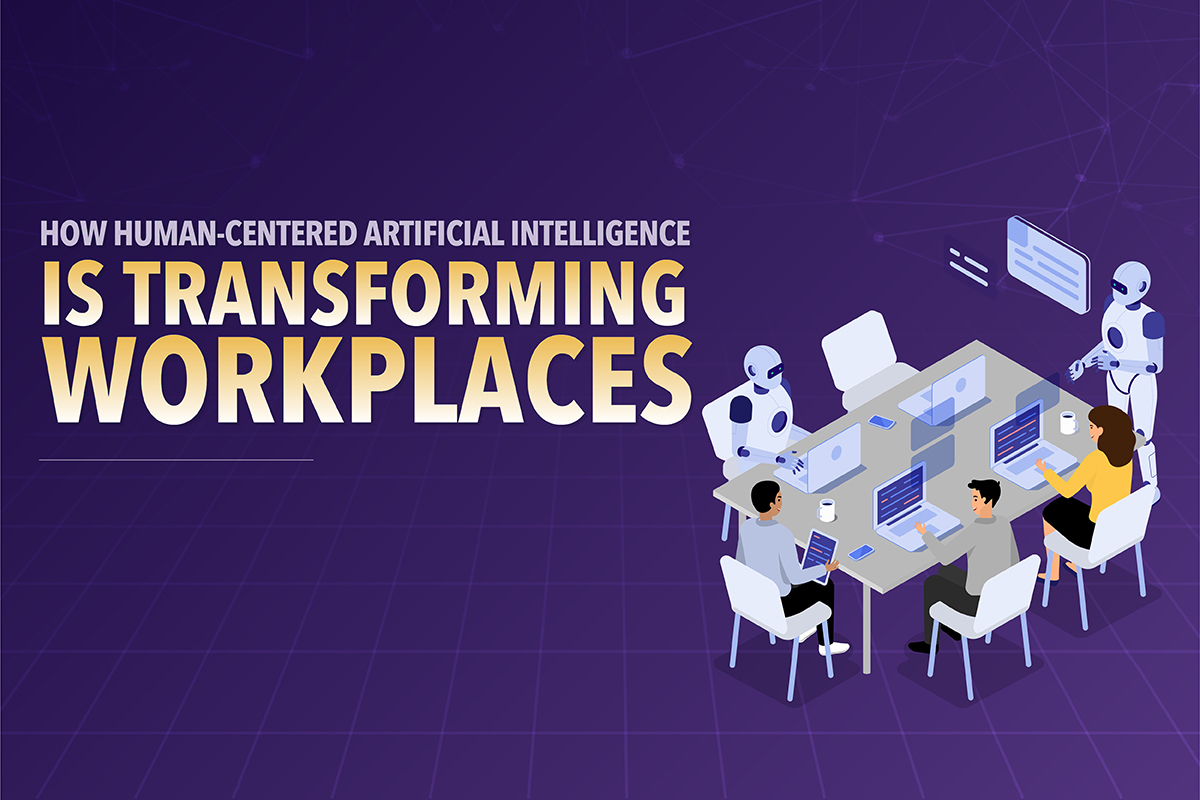How Does Human Memory Work?
Written by:
East Carolina University®
• Jan 10, 2024

How Does Human Memory Work?
Memory is a powerful yet seemingly imperfect brain function. It preserves past experiences, which allow us to learn and grow into who we are now and who we may become. Its perceived flaws however, manifest in the form of forgetting or misremembering things or events—flaws that can worsen through conditions like dementia.
The brain’s inconsistency with memory is due to how human memory works. It is a complex process consisting of different stages and memory types. Breaking down this process can yield deeper insight into memory’s power and why it is so crucial to protect its strength.
What Is Human Memory?
Human memory is the psychologically-based process of preserving and recovering information. This process allows us to draw from previous experience as a learning tool. This tool provides us context, which impacts how we operate in the present and allows us to think about the future. Without memory, we would be stagnant.
The brain’s neurons and synapses —the gaps between neurons—play a vital role in the process. Changes in a neuron’s electrical cell generate the release of neurotransmitters across synapses. This process builds ‘circuits’ in the brain that synthesize the memory. If this happens consistently, the neural connections strengthen, making it easier for memory storage within the circuit’s neurons to occur.
The amygdala , a tiny almond-shaped formation inside the brain, also plays a vital role in memory. It applies emotion to memories, and it particularly ascribes emotions relating to fear. This can help the brain assess current situations for dangers, which could trigger a person’s “fight or flight” response.
The amygdala also helps drive the implicit memories that enable us to complete tasks without remembering how they were learned, like tying a shoe or putting toast in a toaster. Additionally, it plays a role in helping us detect a person’s intentions through verbal and non-verbal communication, such as identifying a shift in vocal pitch or a change in facial expression.
Three Stages of Memory
Converting experiences of sight or sound to memory occurs in three stages .
- Encoding: The stage where the brain converts an experience and its details into a form that the brain can store; encoding primarily happens throug visual, acoustic, or semantic mean.
- Retention: The stage where information gets preserved in the form of a memory.
- Retrieval: The stage where a memory gets accessed.
Different Memory Types
Memories can be categorized into three distinctive types .
Sensory Memory
Sensory memory represents the storage of information gathered by the human senses. The brain stores these memories for a very short time. For example, visual information gets stored for roughly a half-second, while auditory data gets stored for only three to four seconds. The brief nature of sensory memory compels us to focus only on certain aspects of what is detected.
Short-Term Memory
Also known as active memory, short-term memory represents the information that we are actively conscious of or currently thinking about. The focused elements from sensory memory that stick with us are converted into this memory type, where the brain can gather more information about what it’s experienced. Short-term memories typically last 20 to 30 seconds, and most of these types of memories are forgotten after this time interval.
It’s estimated the brain can typically store four units of short-term data at once. However, it’s been shown that memory strategies such as chunking pieces of data into larger blocks may allow the brain to store more short-term data at once, and for a longer period of time.
Long-Term Memory
This type refers to memories that are continuously stored in the brain. This data is typically outside the realm of our current awareness but can be accessed if and when needed. Because of this, Freudian psychology refers to long-term memory as the unconscious or the preconscious.
How Are Memories Organized?
After the brain creates memories, it sorts them in chronological order. The hippocampus acts as a storage house for these sequenced memories. Without this part of the brain, the conversion of new experiences into long-term memories is not possible.
This was demonstrated in 1953 when patient Henry Molaison had his hippocampus removed via surgery as part of an epilepsy treatment. It cured the epilepsy, but it came at the cost of forming new long-term memories. However, Molaison was able to retain the long-term memories he formed before the surgical procedure.
How Are Memories Retrieved?
The recall of a memory can happen consciously or unconsciously. It can also be triggered via a retrieval cue, where other stimuli such as a smell or a taste can trigger a memory. Retrieval cues can happen inadvertently, although people may be able to trigger them deliberately to recall a specific memory.
There are four types of retrieval that trigger memories.
Recall
This type occurs when a memory is retrieved without a cue to trigger its presence. Examples of recall include answering a trivia question or remembering the title of a recently read book.
Recollection
This type involves remembering different memory fragments and reconstructing them into a cohesive memory sequence. This commonly incorporates elements like logical structures, clues, and narratives to add the context that frames the remembered account.
Recognition
This type concerns the identification of information after a repeat experience. When a person takes a multiple-choice test, for example, recognition allows them to spot the correct answer among the group of available options.
Relearning
This type of memory retrieval occurs when a person relearns data previously learned at a separate time. Relearning’s repetitive nature can make it easier to retrieve information in future situations, which can also improve memory strength.
The four elements mentioned above show that answering the question “How does human memory work?” is not straightforward. Memory consists of several steps involving parts of the brain that work in conjunction with each other. The results of this process can provide our lives with the context needed to function properly.
The Perceived Imperfections of Human Memory
Human memory is an essential mechanism. It is also a seemingly imperfect one. Forgetting about things, misremembering things, or even creating false memories can be sources of frustration, and may be perceived as products of a malfunctioning brain.
However, there is purpose behind what may initially appear to be mental errors. The brain not being able to accurately retrieve and recall a bit of information or an event provides further insight into the brain’s ability to create and store memories. It can also potentially provide a better understanding of how serious conditions can hinder the brain’s memory-making capacity.
Memory and Forgetfulness
Forgetting something can be aggravating at the moment. In the long-term, however, forgetting is a good, if not an important part of how the brain handles memory. Forgetting allows the brain to prioritize what’s important . By shedding information the brain perceives as useless or unimportant within a given context, it gives us a better chance of not being distracted by things that don’t matter.
Forgetting also allows us to move forward after painful or traumatic events. When a loved one dies, for example, the brain may make it difficult to retrieve memories of the person in the last moments of their life before they pass. This allows us to have easier access to happier memories of our loved one. It also allows us to recover from the grieving process.
While forgetting may have a purpose, how the brain arrives at this purpose is a complex process. There are several causes and theories to consider related to the act of forgetting. These include the following.
-
Decay theory: This theory revolves around the notion that as memory traces begin to fade, memories will eventually be lost if not accessed. This loss may happen due to the accumulation of new memories.
-
Interference: This occurs when a memory contains similar information to previously stored information. In this case, one memory may supplant the other. An old memory swallowing up a new memory is known as proactive interference, while a new memory supplanting an old memory is called reactive interference.
-
Failure to store: This happens when a memory does not get converted into long-term memory. This can point to the brain’s ability to shed irrelevant data to prioritize more important information. For instance, we may know what a coin may look like and recognize it by its shape, but we may not be able to rattle off the details of its design.
-
Motivated forgetting: This occurs when an individual works to forget about a memory that can cause negative emotions, such as sadness or anxiety. This process can help people improve their ability to cope with traumatic life events.
Forgetfulness Factors
While forgetting is a natural process, several factors can increase its frequency.
-
Excessive alcohol use: Binge drinking can impair a person’s short-term memory, and long-term heavy drinking can cause a person to experience long-term memory loss.
-
Smoking: Excessive smoking can negatively interfere with oxygen getting to the brain, which can lead to memory loss.
-
Illicit drug use: The use of illegal substances can alter brain chemicals, which could make it difficult for the brain to recall memories.
-
Insufficient sleep: A lack of quality sleep can cause fatigue. This can hinder a person’s ability to concentrate and retrieve information.
-
Dietary deficiencies: Insufficient intake of specific types of food and vitamins can slow proper brain function and memory. High-quality fats and proteins along with vitamins B1 and B12 have been shown to be particularly crucial to maintaining brain and memory functionality.
-
Depression, stress, and anxiety: These emotional conditions can interfere with the ability to focus and pay attention, which can impact the ability to make and retain memories. Additionally, trauma-induced stress can also cause some memory loss.
Memory Loss Concerns
Forgetfulness is normal when it occurs at a routine pace. When it occurs at an excessive pace, it can be a sign of serious brain-based conditions like dementia.
A modest decline in memory and other thinking skills is a somewhat normal part of the aging process. However, these reductions can be minor annoyances that don’t disrupt day-to-day living. More severe cases of memory loss can prohibit essential functions such as judgment and reasoning—functions propelled by a properly operating memory.
These cases can be indicators of dementias , a set of diseases that damage the brain and cause malfunction and, eventually, death. Diseases that fall under the dementia umbrella include:
- Alzheimer’s disease
- Frontotemporal dementia
- Lewy body dementia
- Limbic-predominant age-related TDP-43 encephalopathy (LATE)
- Vascular dementia
The primary symptoms of dementia correlate to issues regarding memory . As dementia progresses, people struggle to create new memories. It also takes longer for people to retrieve information, if they can access it at all. However, dementia patients may be able to recall older memories or even remember how to perform skills that were refined through practice, such as playing the piano. This demonstrates a correlation between dementia and damage to the brain’s hippocampus—specifically, tissue loss within the hippocampus .
Current Research on Memory
Deciphering how human memory works is an ongoing process. A lot of this work aims to gain deeper insights into the mechanics behind memory conversion. One research project is using machine learning and neurobiology to show how specific stimuli patterns can influence how the hippocampus sequences memories. Another current scientific theory involves drawing a correlation between memory access and environmental feedback, a theory that suggests better mental flexibility and improved decision-making.
Memory Resources
Since memory is critical to proper daily functioning, it is important to keep the brain sharp so it can convert memories at an optimal level. There are several ways to maintain or even improve memory retention. Some of these activities actively engage the brain, while others produce benefits that boost the brain peripherally.
Physical Activity
Routine aerobic activity yields several physical benefits, but it also provides mental benefits. Getting up and moving around boosts blood flow throughout the brain as well as the rest of the body. This increase in blood flow could improve brain function, which can include memory creation and retention.
Mental Activity
Keeping your brain engaged keeps it in shape, much like lifting weights can help keep your muscles toned. There is no shortage of ways to stimulate your brain. Reading, playing games, doing puzzles, or trying out a new hobby are all fun ways to keep your brain active.
Social Interaction
Spending time with friends and family can prevent stress and depression. This mitigates the effects of two emotional elements that can help cause memory loss. Making the effort to hang out with others is particularly important if you live by yourself.
Stay Organized
Keeping things in an orderly fashion makes it easier to remember things. This involves eliminating clutter in your home or workspace, but it also involves building organized tracking systems, such as to-do lists or online calendars.
Sleep Well
Poor sleep will hinder memory. This doesn’t just mean a lack of sleeping hours, it also means the quality of sleep. Getting into the habit of getting 7 to 9 hours of uninterrupted sleep can help keep your brain sharp.
Eat Healthy
Eating a diet built around fruits, vegetables, whole grains, and low-fat proteins can help keep your brain healthy. If you choose to drink, it’s also important to do so in moderation, as excessive alcohol consumption can disrupt brain function.
Manage Chronic Health Issues
If you have a chronic condition such as high blood pressure or obesity, it’s important to manage these conditions by following the advice of your physician. The more you can mitigate the impact of these conditions, the more likely your memory will function properly.
Resources
Alzheimer’s Society : The Alzheimer’s Society website provides information on various memory aids and tools designed to allow people with memory problems to maintain proper daily functionality.
NASA : The Federal Space Agency’s Mnemocizer tool allows people to create their own mnemonic devices—sentences that can help to memorize word strings.
Games for the Brain : This site is a repository for games designed for mental stimulation and mental fitness.
An Important Part of Human Function
There is still plenty to learn about how human memory works. However, we know enough to understand that memory shapes how we function daily. Without the context that memory provides, we would not be able to perform basic tasks, plan for future events, or interact socially. This is demonstrated through the gradual loss of function concurrent with serious cognitive conditions like dementia.
Memory—and the mind in general—is a precious commodity. The more we engage in the steps necessary to maintain good brain function, the better this commodity may be able to serve us.


